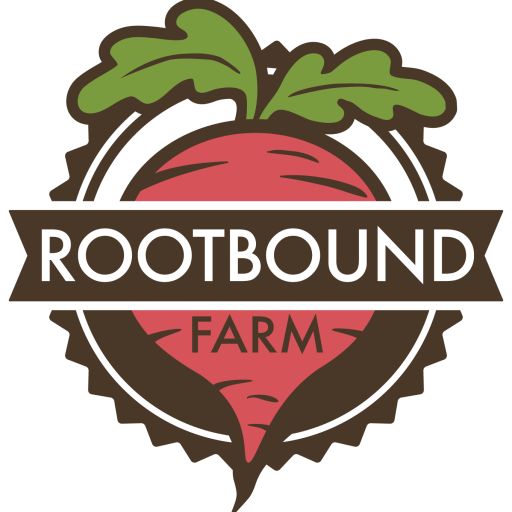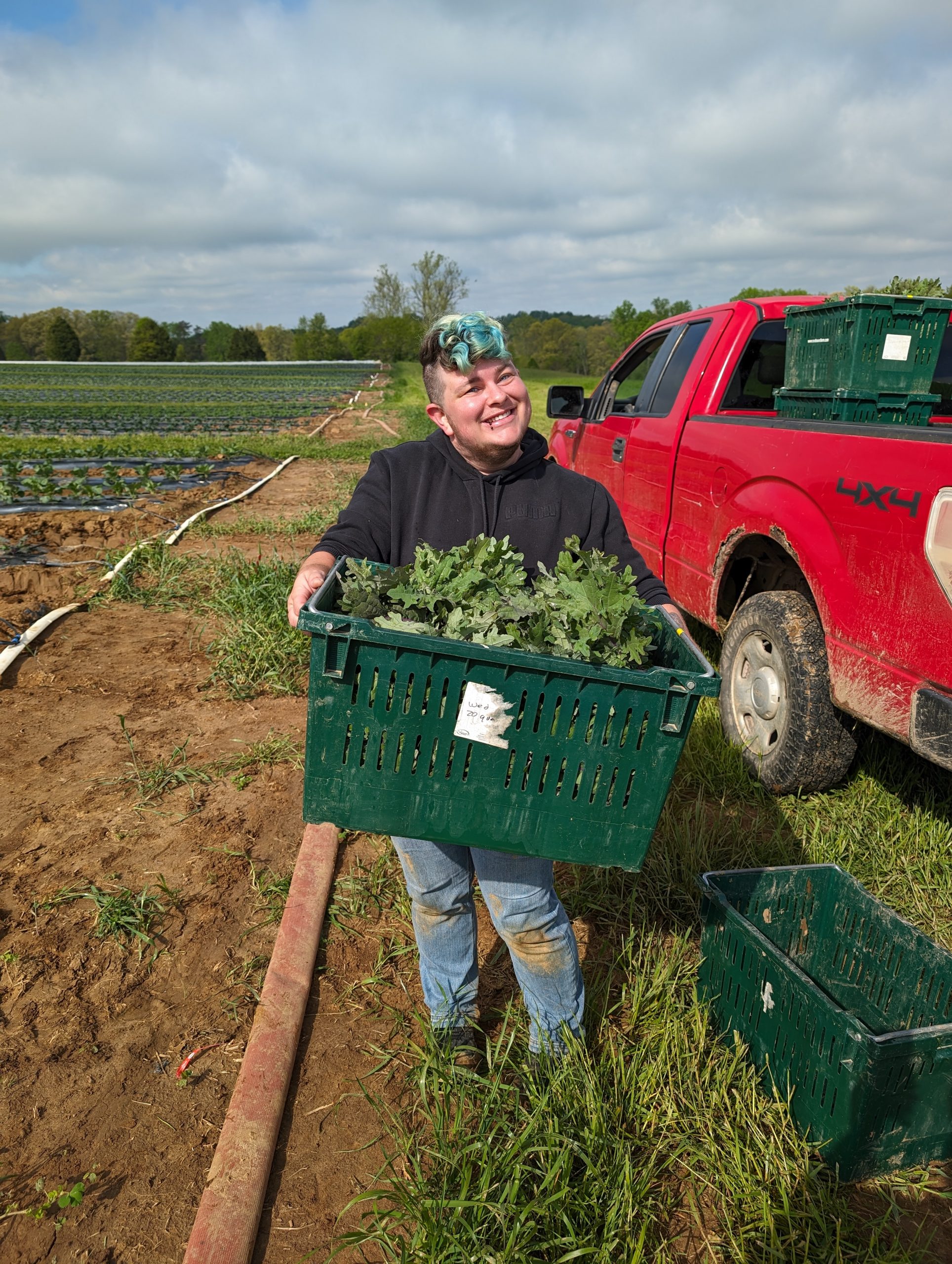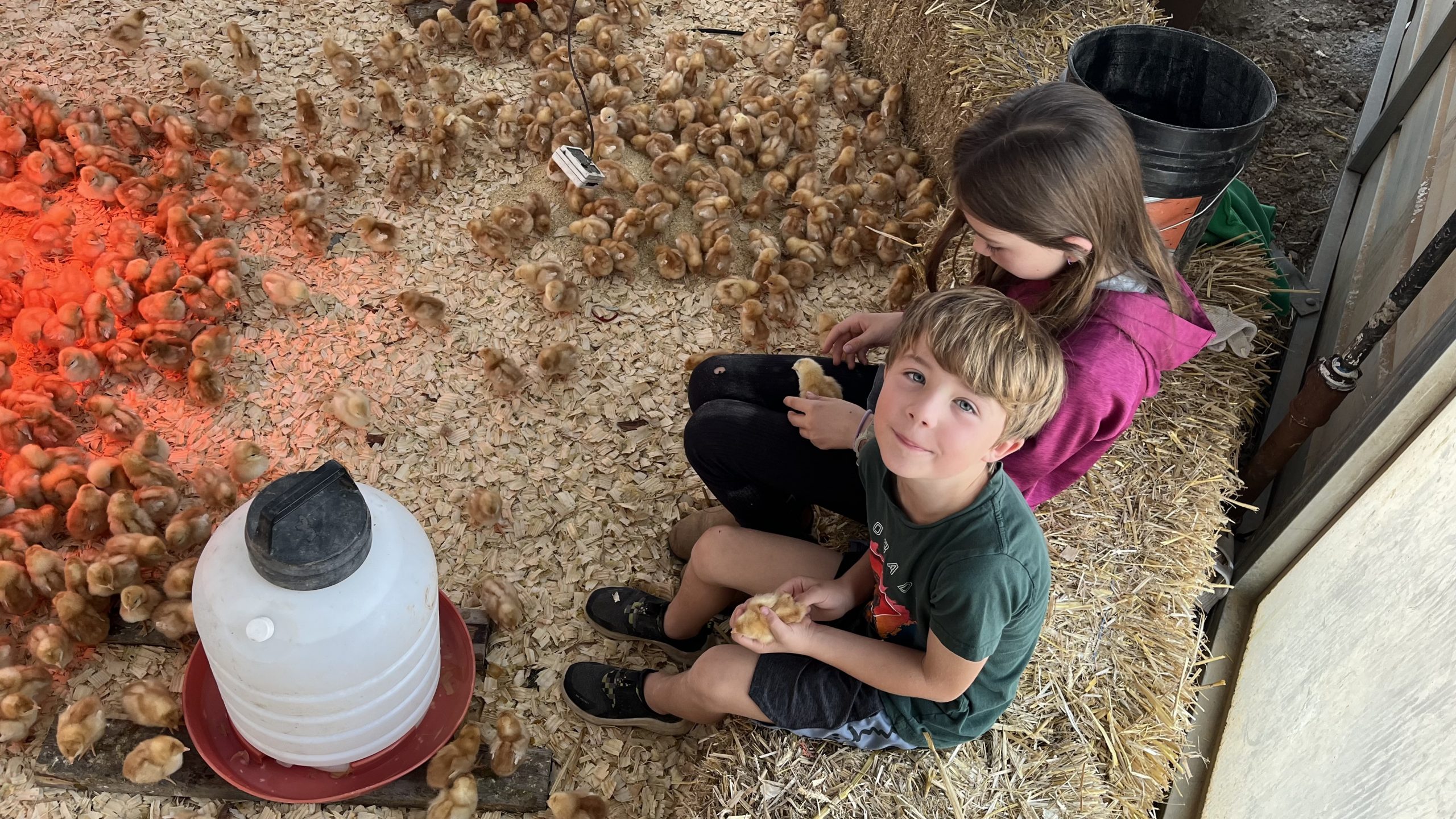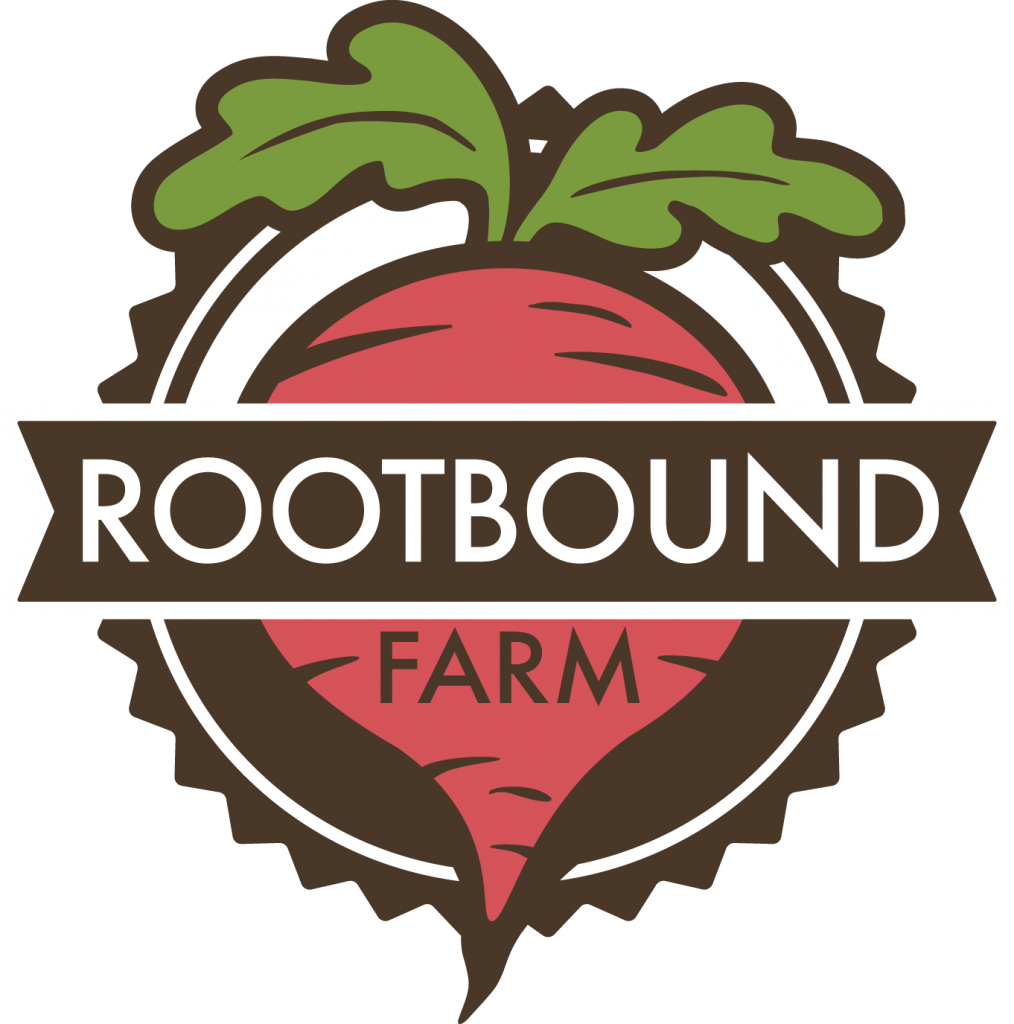We’re back with another Staff Spotlight! This week, I interviewed Omar, one of the seasonal farmers at Rootbound. “Soy joven,” he says. “I’m young.” Omar is one of the newer members on the farm, as it’s his second year working with everyone here. While he does join harvest teams out in the fields, he primarily works with Jerusha, me, and Guadalupe “Pillo” in the packshed.
Omar says, “Es loco, pero sí,” that “it’s crazy but true” that harvesting in the rain is his favorite activity on the farm. “Es una bonita experiencia.” When I asked him what he likes to harvest best, he replied, “todo hoja,” meaning “all of the leaves.” Leafy greens have a hydrophobic quality, and we both agreed that it is pleasing to see the rain droplets fall and float across the kale varieties and the collard greens.
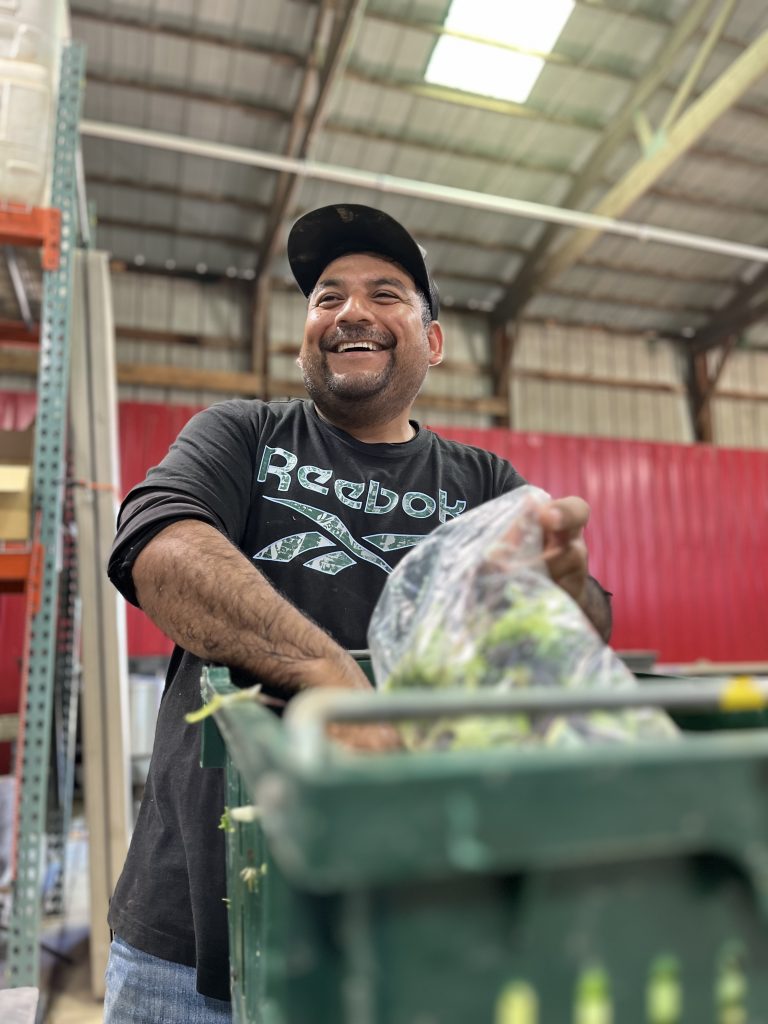
We all like having a healthy and friendly workplace, and Omar is a coworker who takes his daily tasks seriously. He likes doing all the different jobs on the farm and doesn’t have a specific favorite. On CSA days, he starts the morning packing member boxes with Pillo, Jerusha, and me, and then he and the pack team transition to wash, prepare, and organize the day’s harvest for the upcoming round of clients.
Omar’s favorite Rootbound green is broccolini. He eats the tender stemmed brassica in a meal with carrots and seared chicken breast and serves it doused in Maggi seasoning sauce. When he’s off the job, he likes playing volleyball with the farmers. But, he prefers playing fútbol and riding bikes with his son Ian back in Tepic, Nayarit, Mexico, where his family resides.
Hard Work Yields the Sweetest Reward
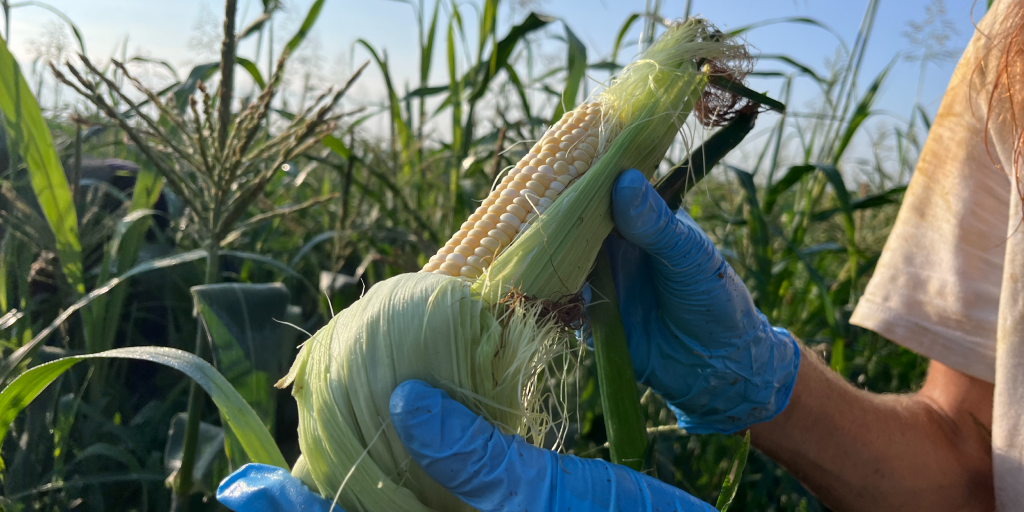
This year, we’re working hard to have the best certified organic corn around and the most compared to years past. Right now, you can find corn growing in different stages on the farm, from seedlings to fruiting stalks. Certified organic corn is a big deal because it is one of the most heavily sprayed crops in conventional agriculture. Cocktails of herbicides applied to corn include Roundup (glyphosate), Atrazine, Warrior (lambda-cyhalothrin), and more.
Besides avoiding the herbicides, we had to put in a lot of hard work to meet our corn goals this year. All produce at Rootbound requires constant attention and labor. Between selecting the planting beds and packing the final ears in your boxes, the farmers select and start seeds, harden off seedlings, transplant small plants into the fields, hand-weed the beds, conduct manual and general pest control, harvest the corn, and then sort between ears that have significant visible damage. Each of these steps promises that you’ll enjoy the sweet fruits of our labor.
One significant part of the corn cultivation process is pest control. While you can count pesticides out of our practices, sweet corn has a sucrose-filled, starchy nature that many bugs, worms, birds, raccoons, rabbits, and humans cannot resist. Everyone is trying to break through the husks and into the corn as soon as possible, and while we do the most to mitigate this, some ears end up as a treat for wildlife around the farm.
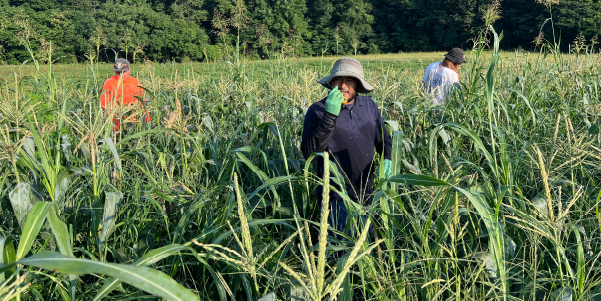
Rest assured, you won’t receive ears with animal damage. We try to assess caterpillar presence at the point of harvest, but sometimes, it is hard to tell if there is any internal damage without shucking every ear. This complication is why you might sometimes find a worm at the top of your corn cob, but it will be okay!
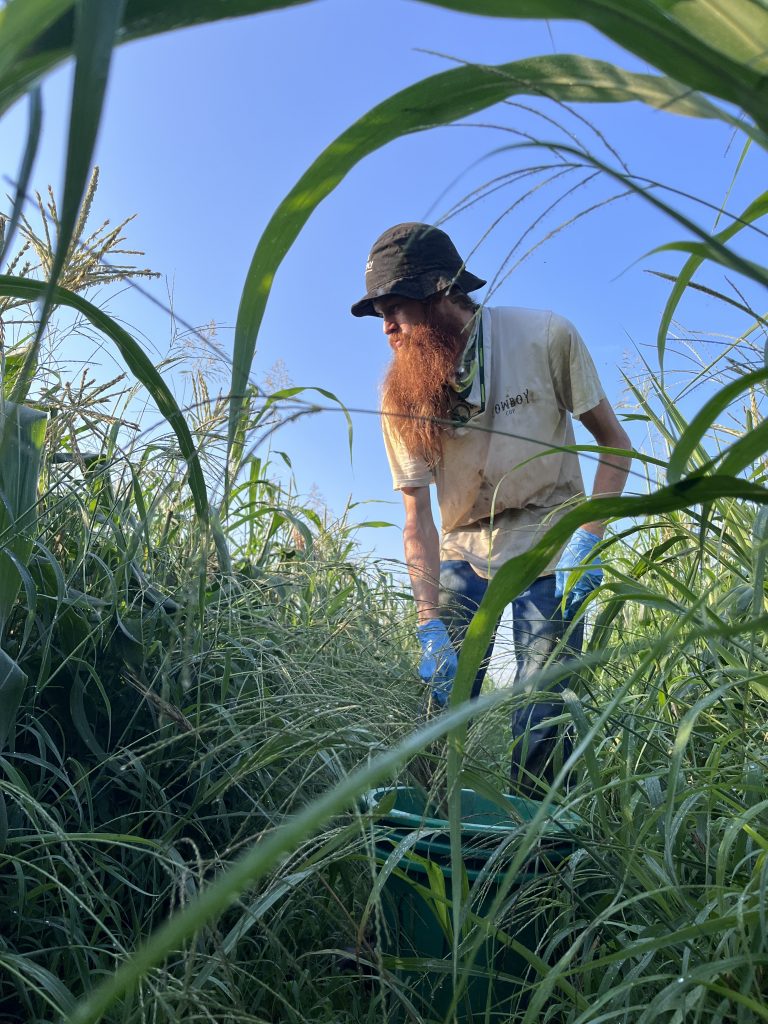
The corn earworm is not a worm at all but a caterpillar that grows into a moth. Our team does a lot to control corn earworms. We innoculate each corn cob while it’s still on the stalk, use varieties with tighter cob stalks to deter moths from laying eggs in the tips, and spray organically allowed natural pest combatants. However, these moths are persistent, and some get through.
The caterpillars themselves are not harmful–they don’t spread germs that make humans sick. If you find an earworm, remove the affected portion of the cob and enjoy.
If you ever experience quality issues, please reach out to us. We always look forward to hearing from you about your experience with the CSA.
Store Your Slicers the Right Way
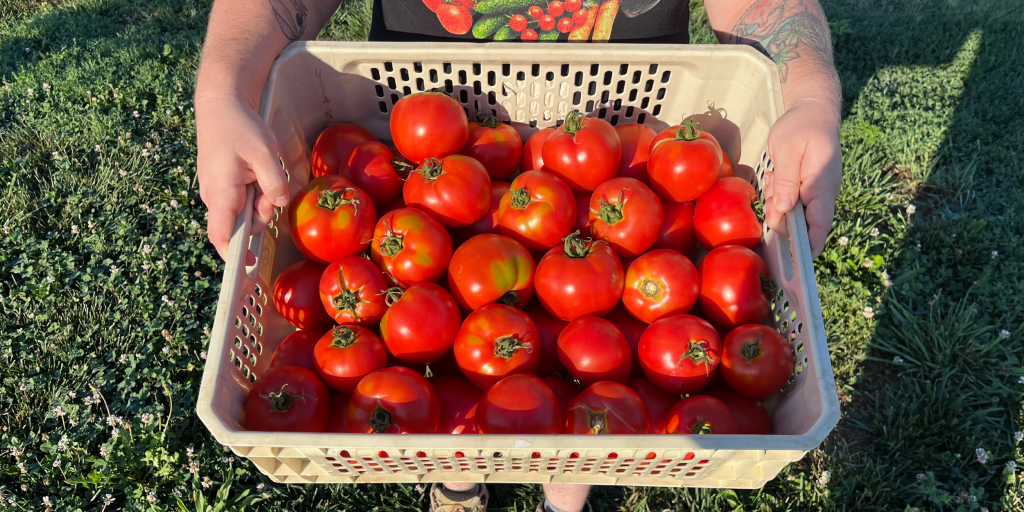
Whether you keep your slicing tomatoes on the counter or in the refrigerator, there is one way we want you to store your Rootbound tomatoes: stem side down. While we often see tomatoes sitting “upright” with their stems facing up, this method won’t increase the longevity of your fruits. Simply turning the tomato onto its stem and “shoulders” distributes the weight evenly across its surface and thus extends its shelf life. In our experience, refrigeration does not affect the flavor or quality much, and it’s a good way to prolong the shelf life if you aren’t eating them right away. If you do decide to refrigerate your tomatoes to prevent pests or overripening, make sure to bring them back to room temperature before eating them.
Italian Eggplant
Cabbage
| Curtido – The Kitchn |
| Date, Feta, and Red Cabbage Salad – Smitten Kitchen |
| Simple Red Cabbage Salad – Vidar Bergum |
| Mala Charred Cabbage with Yogurt – Cabbages.world |
Green Beans
Cauliflower
| Turkish Cauliflower Fritters – Exploring the Turkish Kitchen |
| Harissa Roasted Cauliflower – The Balaboosta Chef |
